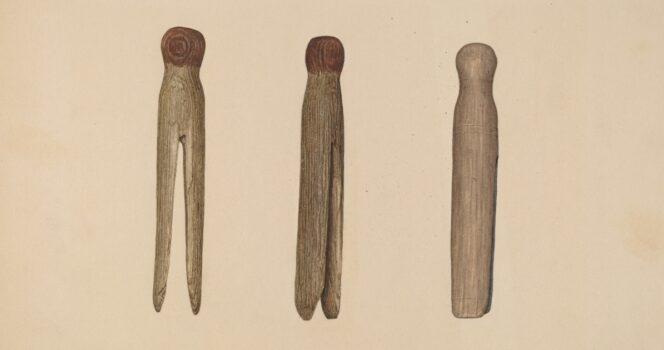Before modern dryers made laundry a button-push affair, people depended on the sun, wind, and simple inventions to get the job done. Among them, the classic wooden clothespin stands out for its practical design and sustainability. A recent discussion online about mysterious old wooden pegs with split “legs” brought this traditional tool back into the spotlight. The answer, given by those who remember: they’re the original wooden clothespins, a longtime eco-solution for drying clothes.
The first clothespins were nothing fancy—just a carved piece of wood, bone, or even stone, shaped to grip fabric. Hanging clothes outside made use of natural energy, but wind could quickly undo hours of washing, making strong, well-made pins a necessity.
In the mid-1800s, the design saw a big upgrade with the invention of spring-loaded clothespins. David M. Smith’s 1853 patent described a better way: two wooden arms joined by a spring, allowing for a strong grip on the clothesline. Factory production soon made clothespins affordable for everyone, supporting laundry routines in homes around the world.
As times changed, plastic versions appeared, but wooden clothespins have kept their appeal. They’re biodegradable, sturdy, and good for projects as well as drying. For many, using them is not just practical; it’s a way to reduce energy use and connect with natural rhythms. Their presence in homes is a reminder of simpler, greener times—and they keep socks out of the wind, too.
Around the world, wooden clothespins are still in demand, valued both for their function and their nostalgic charm. If you appreciate sustainability and self-sufficiency, there’s a lot to love in this small, classic invention.


